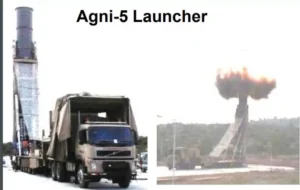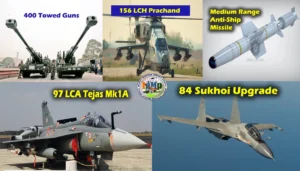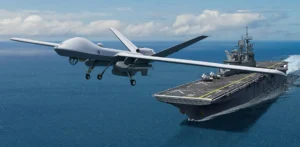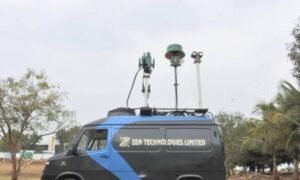Source : The EurAsian Times
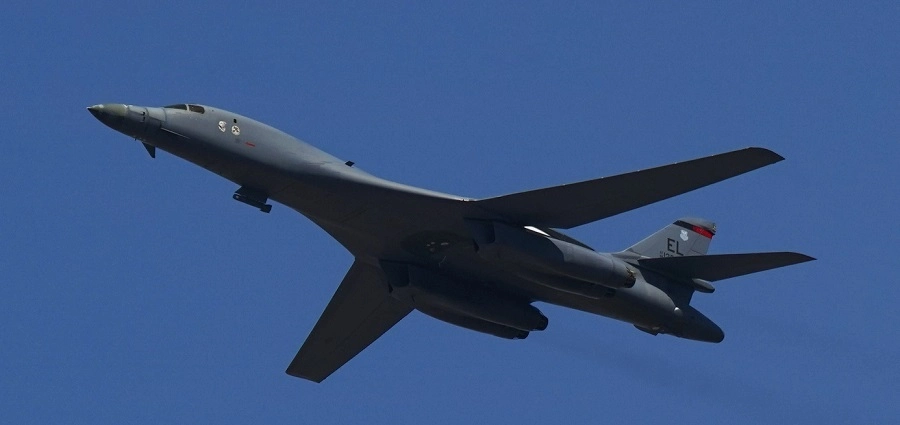
Exercise Cope India 2023 : USAF B1B Lancer Strategic Bombers at Kalaikunda Air Base for Cope India 2023 Exercise – Tensions in China
On April 10, 2023, Gen Kenneth S Wilsbach, the commander of the US Pacific Air Forces, told the press in India that the USAF will deploy two B1 bombers, four to six F-15Es, one C-17 and two C130s during Phase 2 of the 11-day Cope India 2023 bilateral Air Exercise between the Indian Air Force (IAF) and the United States Air Force (USAF).
The B-1B, nicknamed “The Bone,” is a long-range, multi-mission, conventional bomber capable of undertaking missions worldwide from its bases in the United States and forward-deployed locations.
Cope India 2023
The current Cope India exercise series edition is being held at Air Force Stations Arjan Singh (Panagarh), Kalaikunda, and Agra. The exercise aims to enhance mutual understanding between the two air forces and share their best practices.
Phase 1 of the exercise, which commenced on Monday, April 10, 2023, is focused on air mobility and involves transport aircraft and Special Forces assets from both the air forces.
Both sides have fielded the C-130J and C-17 aircraft, with the USAF also fielding an MC-130J, a C-130 variant equipped and honed for special operations.
Phase 1 Of Cope India 2023
Phase 1 of Cope India 2023 continues the February 2023 Yudh Abhyas exercise at Hindon and Agra between the US Air Force’s 535th Airlift Squadron and the IAF’s No. 81 Squadron operating Boeing C-17 Globemaster III.
The Yudh Abhyas exercise started with a basic visual formation airdrop. The training flights slowly grew in complexity, culminating with a GPS-degraded, single-ship flight flown by US Air Force crews with IAF observers on board.
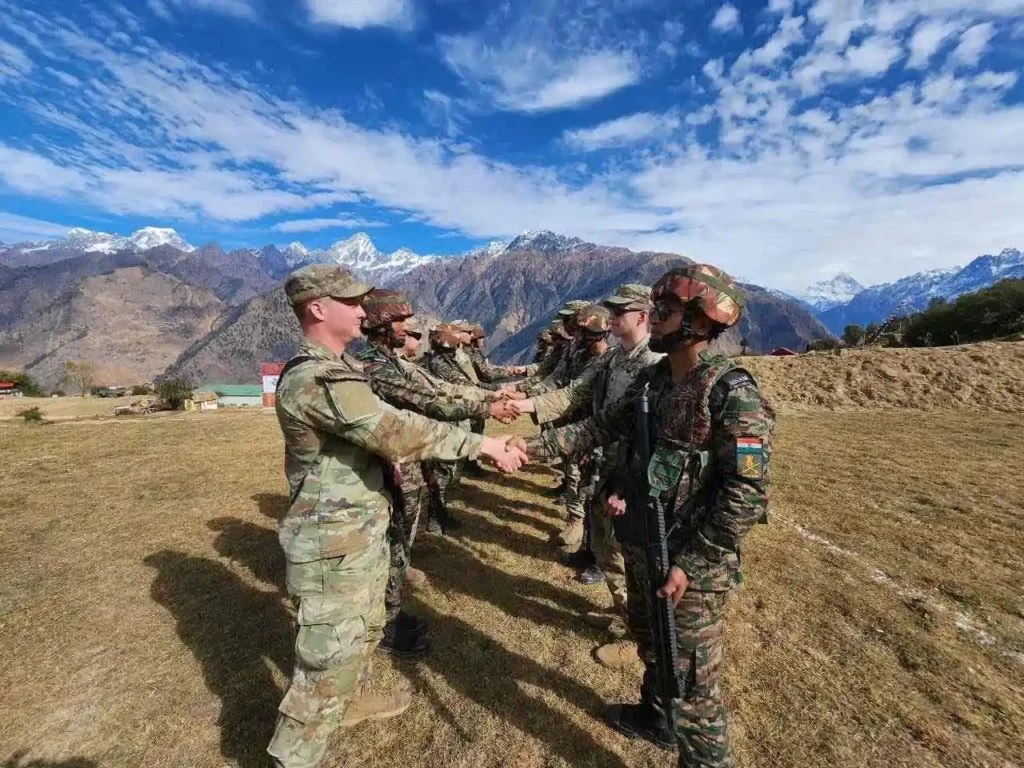
One of the more significant training flights was a successful NVG (Night Vision Goggles) formation, verifying the IAF’s vital currency since first acquiring the capability in 2019.
During Cope India 2023, US Air Force’s 535th Airlift Squadron and the IAF’s No. 81 will focus on visual airdrop procedures while adding hands-on Joint Precision Airdrop System (JPADS) operations.
Phase 2 Of Cope India 2023
Phase 2 of the exercise will be held at the Indian Air Force base at Kalaikunda, focusing on interoperability and honing air combat tactics for joint operations. In the past, Cope India exercises only involved USAF and IAF fighters.
The participation of two B-1B bombers in the current edition of the exercise is a surprise—a surprise with a message, if not a surprise strategic course correction by India.
On two occasions, B-1B bombers have flown in Indian airspace to do flypasts during Aero India airshows.
Explaining the first-time participation of the US bomber in an exercise in India, Gen. Wilsbach said, “We have an opportunity not only to show the aircraft in public, but the crew also have an opportunity to train with one another and incorporate the bombers into the scenarios so that everybody on all sides has a chance to see how they operate and we can improve our tactics, techniques, and procedures.”
Why The Bone
What kind of scenarios did Gen. Wilsbach have in mind that would require IAF personnel to operate with B-1B to improve tactics, techniques, and procedures?
Developing Tactics Against Cruise Missile Carrying Bombers?
If the balloon goes up along the LAC, a distinct possibility with China inexorably upping the ante, most recently through a strident and outrageous claim of sovereignty over Arunachal Pradesh, the IAF would need to mitigate the threat posed by PLAAF H-6 bombers carrying cruise missiles.
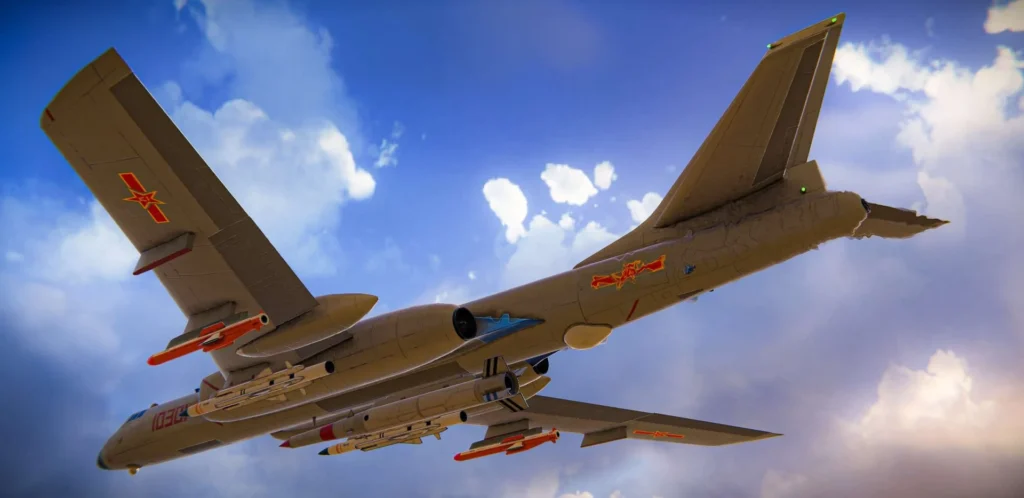
It must develop tactics to engage the bombers and the cruise missiles they would launch. Working with the USAF to develop such tactics would be a smart approach.
Interoperability For Staging USAF B-1B On Operational Missions?
The US, too, has its imperatives for B-1B interoperability. The US may request staging rights for its B-1B bombers in a conflict with China over Taiwan. Ordinarily, India would not consider such a request, but if China crossed Indian red lines, India would certainly consider such a request.
In this context, the deterrent value of such an exercise cannot be underestimated. The fact that USAF could stage its bombers through India would be very sobering for the Chinese leadership.
India’s Own Need For A Bomber?
The ongoing war in Ukraine has revealed the need for several paradigm shifts in aerial warfare. For example, it’s increasingly clear that modern air defense missile systems rule out sustained air superiority when two peer adversaries fight.
The adversaries must rely on drone warfare and missile (cruise & ballistic) strikes for sustained long-range interdiction. Had Russia not adopted its bomber fleet for cruise missile attacks over the years, it’s unlikely it would have been able to sustain its military campaign in Ukraine.
The IAF, which has reportedly toyed with the idea of acquiring modern bombers in the past, also likely appreciates the need to purchase a cruise missile carrier urgently. Relying on a few Su-30MKIs, which can carry just a single Brahmos-A each, will not be prudent.
The USAF Global Strike Command has retired 17 B-1 bombers from its fleet of 62. The 45 that remain in service will serve until the new B-21 stealth bomber is ready for duty.
Some of the retired B-1Bs had severe structural fatigue, especially at the wing-pivot points, because the jets were flying high and slow instead of low and fast with wings swept, as they were designed to do. However, repairs would fix the issues.
A USAF official says, “It would have taken between $10 million and $30 million per aircraft to get back to a status quo fleet in the short term until the B-21 comes online.”
In other words, the IAF could lease or acquire a squadron of B-1B bombers and cruise missiles to go with them for around $1 billion! Purely from the point of view of augmenting its strike power to a level where it can deter Chinese belligerence, a B-1B bomber squadron would be the most cost-effective and quick option available to India.
India and the US have all the agreements in place for the sale/lease of the bombers:
- In June 2016, the US designated India a “Major Defense Partner,” allowing for transferring a B-1 B-like system.
- The 2016 Logistics Exchange Memorandum of Agreement (LEMOA) allows our militaries to use each other’s bases to repair and replenish supplies.
- The 2018 Communications Compatibility and Security Agreement (COMCASA) agreement facilitates the sale of high-end technology from the US to India.
- The October 2020 Basic Exchange and Cooperation Agreement (BECA) agreement facilitates sharing of Geospatial Intelligence.
The reasons listed above for the participation of the two B-1B bombers in Cope India 2023 are pure speculation. What is real is the fact that the B-1B participation in the exercise is not whimsical! B1B Lancer B1B Lancer B1B Lancer B1B Lancer B1B Lancer B1B Lancer B1B Lancer IgMp



